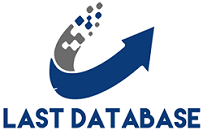One of the best ways to get their attention is to meet them where they already spend much of their time: in their inbox. The average person spends more than four hours a week reading, writing and responding to emails, so there’s a good chance you can reach them there.
What Is a Meeting Request Email?
A meeting request email is any email that is sent to ask to schedule a meeting with someone. Usually, it will ask whether the recipient has time to talk or make an appointment to speak. This applies to both virtual meetings and in-person meetings.
Typically, the meeting will cover specific topics in-depth. In many cases, these are actionable items that require decisions. For example, someone may send a meeting request email in an attempt to schedule time to talk about a business’s budget or marketing initiatives.
Of course, there are many ways to ask to schedule UAE Phone Number a meeting, be it by phone, in-person, or through email. However, sending a meeting invitation email is a particularly good method because it lets users carefully plan out their words and tone, avoiding any embarrassing blunders or fumbles that could strike during a spur-of-the-moment conversation.

Plus, sending a meeting email request is an easier way to keep track of your plans, so both parties can quickly add the proposed time and date of the meeting to their calendars or go back to the email for future reference.
Before You Send a Meeting Request Email
Remember, people receive a lot of emails, so make yours count. An effective meeting request email sets the tone for the meeting itself. You don’t want to let a few minor (but easy to make) mistakes prevent you from getting what you want.
How to Find and Verify an Email Address
Automate Your Outreach Sequence
Your target audience might be vast, so if you’re reaching out to hundreds of prospects every week, it’s impossible to manually stay on top of following up with all of them.
That’s why a sales engagement tool like Mailshake is essential to creating an effective, scalable follow-up email sequence.
With Mailshake, you can:
Personalize your emails in bulk with powerful mail merge features
Reply to leads straight from your Mailshake dashboard with Lead Catcher
Schedule follow-up emails that are paused or triggered based on whether a recipient opens an email, clicks a link, or replies
Set the amount of time between follow-ups (5 days between the first and second email, 7 days between the second and third, etc.), and the days and times you want them to send (for instance, between 8 am and 6 pm on weekdays)
Optimize your copy and overall outreach strategy by A/B testing different subject lines, body copy, and full campaign sequences
With native integrations to your CRM and third-party integrations to hundreds of software tools via Zapier, you can automate your outreach even further by triggering campaigns when someone downloads an eBook, books a meeting, or signs up for a demo
If social media and the phone are a part of your outreach cadence (keep reading to find out why you should be), you can include those touchpoints in your outreach sequences as well with Mailshake Sales Engagement.
Meeting Request Email Templates
Personalize Your Request (with Examples)
Personalization is one of the most powerful (and free!) tools in your sales arsenal. Not only do B2B buyers respond to personalization, they’ve also come to expect it. More than 80% of buyers want brands to get to know them, while 87% say that personalization positively impacts how they perceive a company.
Be Specific About Your Request
On a positive note, the average time a person spends reading an email has increased to about 11.1 seconds (a 7% uptick since 2011). However, that’s still not much time to make a strong impression, which means you’ll want to get straight to the point.
Make It Easy to Say ‘Yes’
You’re the one sending the business meeting request by email, so the only responsibility your prospect should have is to agree, and show up. You’ll need to do most or all of the heavy lifting, such as choosing a venue and suggesting a date and convenient time. The less work they have to do, the better you look, and the more likely they are to say ‘yes’.
You should also let them know up front how long you expect the meeting to last. Your target audience needs to know just how much of their time you’re requesting.


